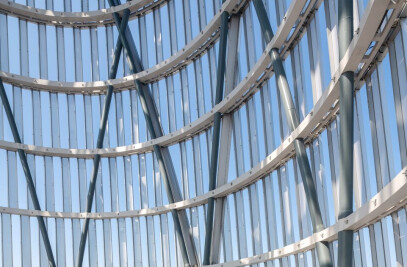Located in the heart of Chengdu – one of China’s key centres of finance and commerce – is The Temple House, a historically-rich hotel that opened in July 2015. Designed by Make Architects for Swire Hotels, The Temple House is the third hotel in Swire’s flourishing House Collective portfolio, following The Upper House in Hong Kong and The Opposite House in Beijing. Key to the design concept was for the hotel’s form and materiality to convey outstanding design excellence, with a high degree of comfort and facilities, and a welcoming, well-embedded “local” quality. Katy Ghahremani, Make partner and lead architect on the project, states: “The design was not a linear process. It was an iterative dialogue with Swire Hotels which made the process much more interesting. We could look at the design holistically and this created a really dynamic relationship between the design of the hotel’s external and internal spaces.” The main design trigger was the location of Chengdu itself – with its rich history, celebrated traditions and lush landscape. Brian Williams, Managing Director of Swire Hotels, clarifies: “We want people to come to Chengdu and have a unique hotel experience, one they couldn’t have in Hong Kong or Beijing. The hotel is unique to Chengdu, and unique in Chengdu.” The hotel embraces a typical Siheyuan or ‘courtyard house’ design, with a sequence of courtyard gardens bordered by two L-plan medium rise buildings – one housing 100 hotel rooms, and the other 42 serviced apartments. A beautifully-restored Qing Dynasty heritage building, at the corner of the site, is the anchor and entrance point for the hotel. Guests reach the hotel’s core facilities by travelling through the heritage building’s internal two-storey high courtyard into a reception area, and enter the main hotel by passing down a grand staircase to the landscaped courtyard level. Located here are covered routes to the lift-cores for the hotel rooms and apartments, as well as an array of restaurants, cafes, and other general facilities. Throughout the design process, Make and Swire Hotels undertook rigorous testing of visual and experiential possibilities relating to surface textures, internal light and shadow effects, and interior views. The city-facing and internal courtyard-facing facades were given entirely different treatments; the former is essentially solid and brick-built, the latter are sheer curtain-walls of subtly fritted glass, which maximise the reflection of light into the courtyard. The city-facing brick facades of the hotel and apartment segments were inspired by the local production of brocade, with façade panels formed of brick and black solid reconstituted stone lintel elements. The three-dimensional woven façade combines modern design with the traditional Chengdu architectural elements of timber, brick and step stones. The light-wells embedded in the courtyard layer, organically shaped in plan and stepped in section, are reminiscent of the terraced paddy fields of Sichuan’s steep hillsides when seen from beneath. The terracing effect was echoed even more dramatically in the design of the grand staircase that connects the ground floor reception area to the courtyard. The Temple House forms part of Chengdu’s Daci Temple Cultural and Commercial Complex, a large-scale mixed-use development by Sino-Ocean Land and Swire Properties, in one of the city’s many rapidly developing urban areas. The Temple House is Make’s second project with Swire Hotels, following the successful launch of the Montpellier Chapter Hotel in Cheltenham, United Kingdom in 2010.
Project Spotlight
Product Spotlight
News

Fernanda Canales designs tranquil “House for the Elderly” in Sonora, Mexico
Mexican architecture studio Fernanda Canales has designed a semi-open, circular community center for... More

Australia’s first solar-powered façade completed in Melbourne
Located in Melbourne, 550 Spencer is the first building in Australia to generate its own electricity... More

SPPARC completes restoration of former Victorian-era Army & Navy Cooperative Society warehouse
In the heart of Westminster, London, the London-based architectural studio SPPARC has restored and r... More

Green patination on Kyoto coffee stand is brought about using soy sauce and chemicals
Ryohei Tanaka of Japanese architectural firm G Architects Studio designed a bijou coffee stand in Ky... More

New building in Montreal by MU Architecture tells a tale of two facades
In Montreal, Quebec, Le Petit Laurent is a newly constructed residential and commercial building tha... More

RAMSA completes Georgetown University's McCourt School of Policy, featuring unique installations by Maya Lin
Located on Georgetown University's downtown Capital Campus, the McCourt School of Policy by Robert A... More

MVRDV-designed clubhouse in shipping container supports refugees through the power of sport
MVRDV has designed a modular and multi-functional sports club in a shipping container for Amsterdam-... More

Archello Awards 2025 expands with 'Unbuilt' project awards categories
Archello is excited to introduce a new set of twelve 'Unbuilt' project awards for the Archello Award... More

























